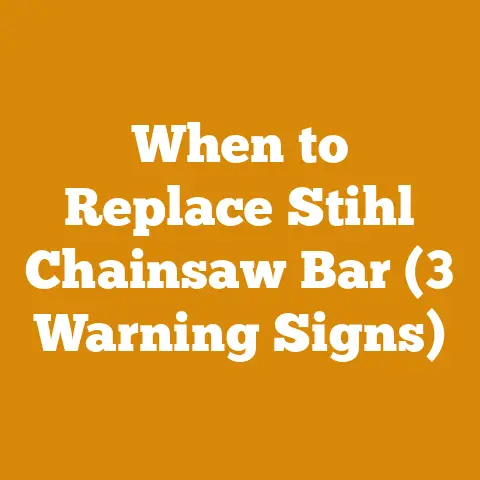Tree Service Contract (4 Essential Clauses)
“The best time to plant a tree was 20 years ago.
So, you’re thinking about diving into the world of tree service contracts? Great choice! It’s super important to get these right, especially if you’re dealing with big, beautiful trees that need some TLC. As someone who’s spent a fair share of time around chainsaws and towering oaks, let me walk you through the essential clauses you should know.
The second-best time is now.” — Chinese ProverbWe’ll break it down into four key sections, and I’ll sprinkle in some stories and tips from my own experiences along the way.
Ready?
Let’s jump in!Essential Clauses in a Tree Service Contract
1. Scope of Work
Have you ever hired someone and then found out they didn’t quite understand what you needed?
The scope of work clause is all about making sure everyone’s on the same page.Understanding the Scope
Examples:
- Pruning vs.
Removal: You might want just a few branches trimmed, but the contractor thinks you’re asking for a full tree removal.
I once had a client who wanted a single branch trimmed, and we nearly ended up cutting down the whole tree — yikes!- Clear Definitions: Be sure to define terms clearly.
Are we talking about trimming, topping, or removing deadwood?Tips:
- Communicate Clearly: Always have a detailed discussion about what needs to be done.
- Use Visuals: Pictures can be a huge help.
Show or send photos to avoid misunderstandings.Personalizing the Service
Every tree is unique, just like the people who care for them.
I’ve worked on ancient oaks that required delicate handling and young saplings that needed nurturing from the start.
When defining the scope, think about:
- Tree Species & Health: Is the tree healthy or struggling?
Its condition can dictate the type of service required.- Environmental Considerations: Proximity to structures or power lines can add complexity.
2. Pricing & Payment Terms
Money can be a touchy subject, right?
But getting the pricing right upfront is crucial to avoid any awkwardness down the line.Detailed Pricing
Experience:
I once did a job where the client expected an all-inclusive price and was shocked by additional fees for debris removal.
Oops!
Lesson learned: transparency is key.Considerations:
- Itemized Estimates: Break down costs for labor, equipment, and disposal.
- Payment Schedule: Will it be a flat rate? Hourly? When are payments due?
Warnings:
- Hidden Costs: Watch out for extra charges like stump grinding or emergency call-outs.
Flexible Payment Options
It’s not uncommon for clients to have budget constraints.
Offering flexible payment options can make your services more accessible:
- Installments: Allow payments over time for larger projects.
- Discounts: Offer discounts for referrals or multiple services booked together.
3. Liability & Insurance
Safety first, folks! This one’s all about covering your bases.
Once upon a time, I was called to remove a tree that was perilously close to a power line.
It was nerve-wracking, but knowing we had the right insurance helped me sleep at night.Key Points:
- Insurance Requirements: Ensure contractors have liability and workers’ compensation insurance.
- Damage Liability: Clarify who’s responsible for any accidental property damage.
Safety Callout:
- Verify Insurance: Always ask for proof of insurance before work begins.
Risk Management
Understanding potential risks is vital. Here are some scenarios:
- Falling Branches: Even a small branch can cause significant damage or injury.
- Equipment Failure: Chainsaws and other tools must be in top condition to prevent accidents.
4. Timeline & Completion Dates
Time is money, right? You don’t want a project dragging on forever.
Scheduling with Precision
Experience:
I once worked on a project that stretched into weeks because of unpredictable weather.
The client was understandably frustrated.Details to Include:
- Start and End Dates: Clearly state when work will begin and expected completion dates.
- Delays: Discuss potential weather delays and how they’ll be handled.
Troubleshooting Tips:
- Regular Updates: Keep communication open with regular progress reports.
Adapting to Change
Sometimes things don’t go as planned. Be prepared by:
- Contingency Plans: Have backup plans for common issues like equipment failure or crew shortages.
- Client Communication: Keep clients informed about any changes to timelines or scope.
Equipment & Safety Precautions
Prerequisites
Before starting any tree service work, ensure you have:
- Basic knowledge of tree species
- Understanding of safety protocols
Required Equipment
- Chainsaw
- Safety harness
- Helmet with face shield
- Gloves and boots
- First aid kit
Critical Safety Precautions
Essential Gear
I’ve learned over the years that having the right gear can make all the difference:
- Protective Clothing: Wear durable clothing to protect against cuts and abrasions.
- Ear Protection: Chainsaws can be loud; protect your hearing with proper ear protection.
Safety Protocols
From my experience, safety protocols are non-negotiable:
- Always wear protective gear.
- Check equipment before use.
- Clear the area of bystanders.
Common Concerns & FAQs
What if I need changes after signing?
Discuss potential changes upfront and add an amendment clause to address this.
How do I handle unsatisfactory work?
Include a clause for dispute resolution or mediation processes.
Can I negotiate contract terms?
Absolutely!
Contracts are not set in stone, so feel free to discuss and negotiate terms until you’re comfortable.What should I do if I suspect unsafe practices?
Address concerns immediately with the contractor. Safety should always come first.
Conclusion
To wrap it up, having a solid tree service contract isn’t just about legality; it’s about peace of mind for both parties involved.
Trust me, taking the time to hammer out these details now will save you plenty of headaches later on.Got more questions?
Dive into the FAQs or feel free to drop me a line anytime.
Happy tree servicing!






